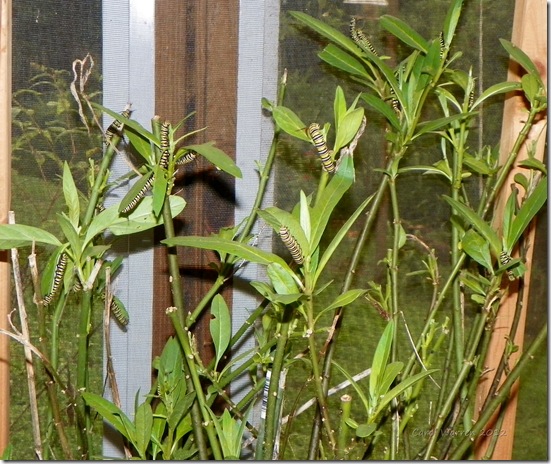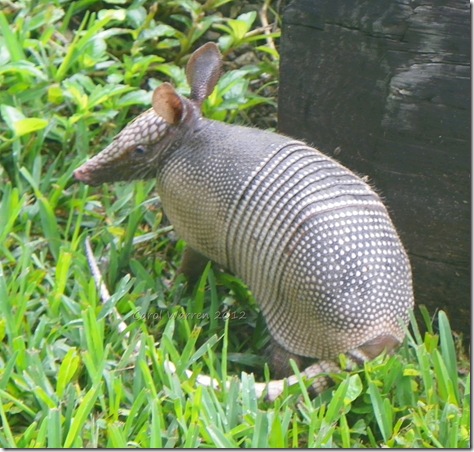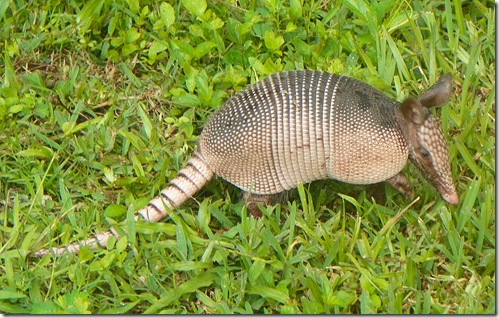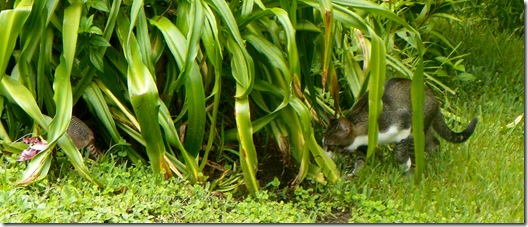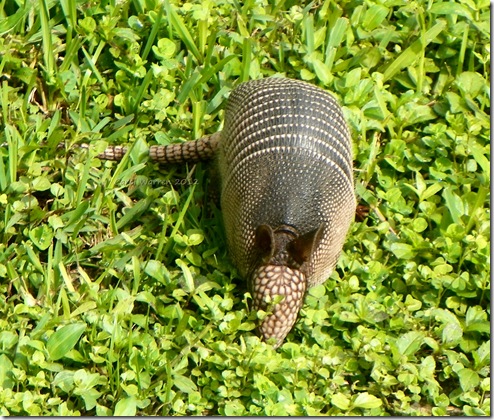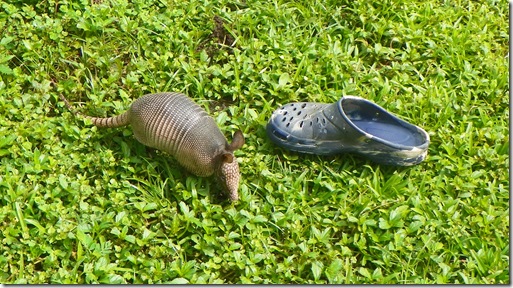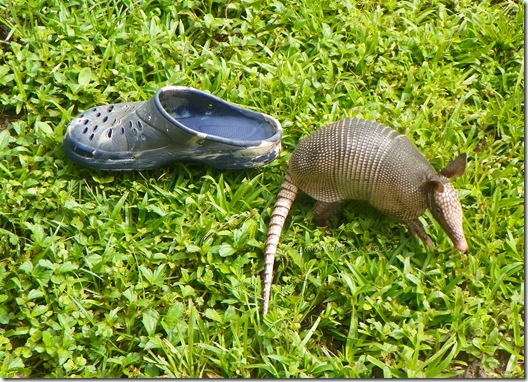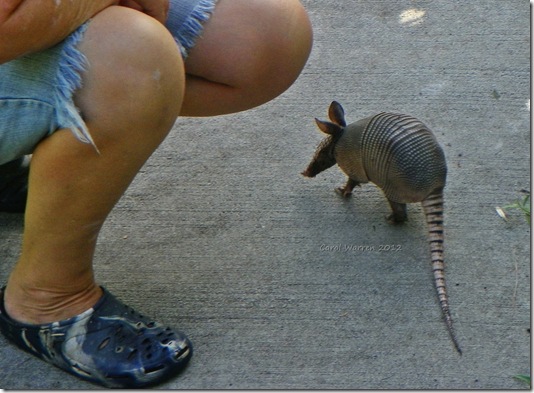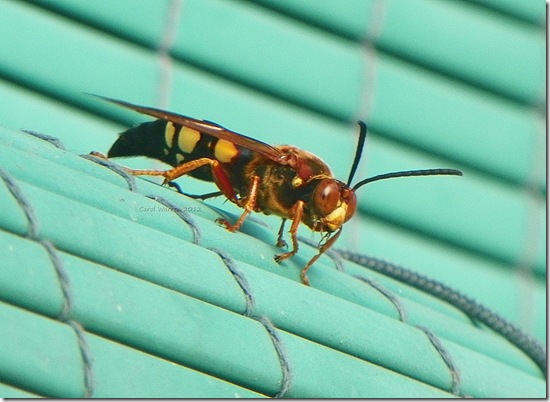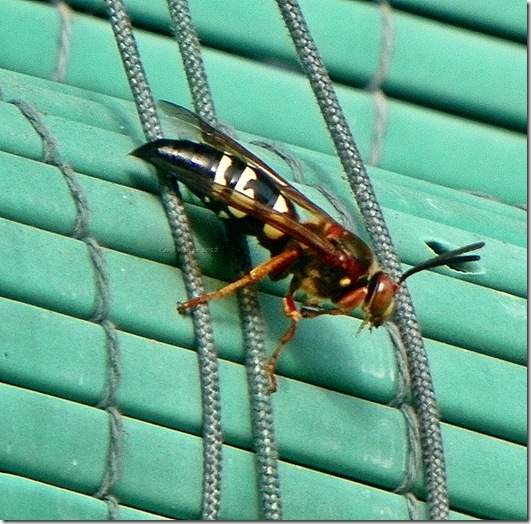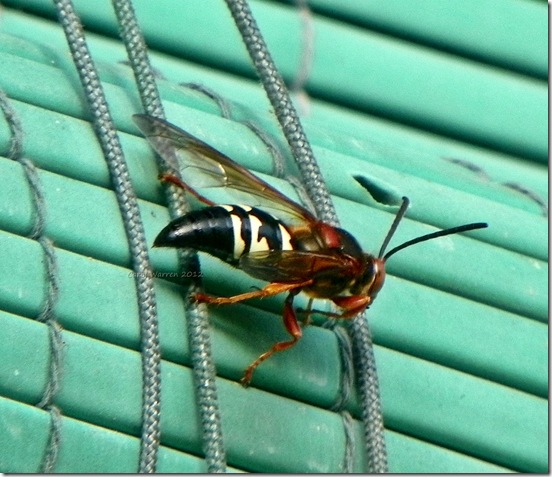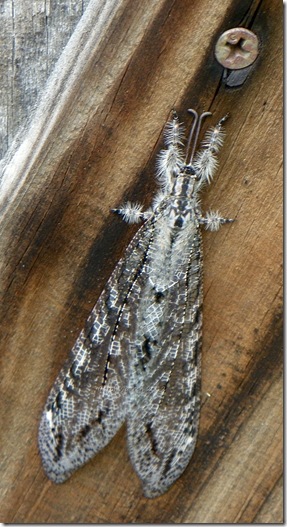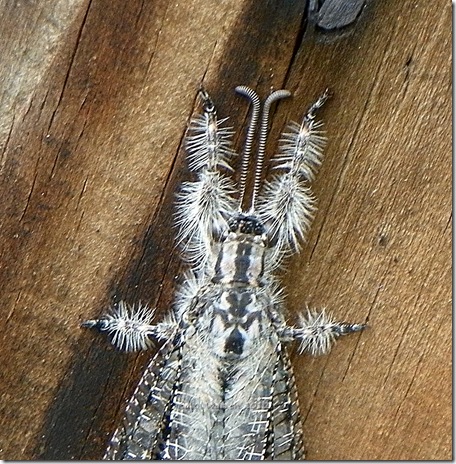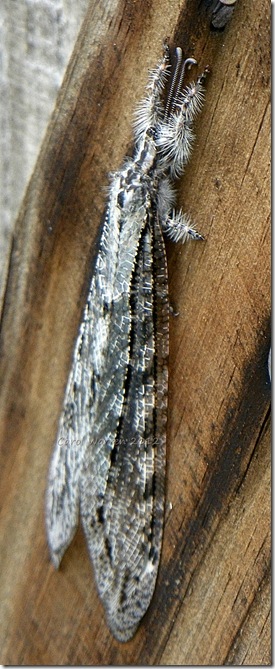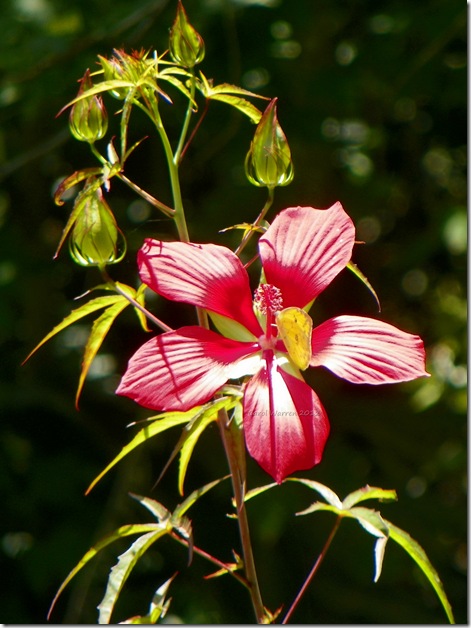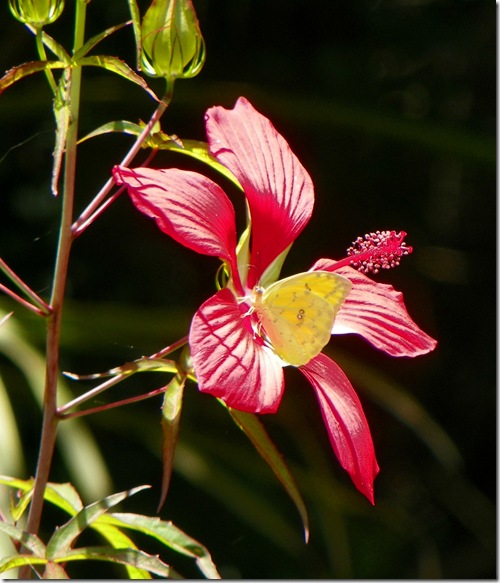We went boating just a few days before the 4th of July. We like to be on Lake Monroe, FL for the fireworks.
I had about 30 caterpillars in the butterfly house so I brought in all my plants and turned my screen room in to their space.
By the time we got back, we had 31 chrysalis. Most were in the butterfly house but because I had more plants than space in it…I had the door open and all the rest of the plants squeezed up next to it so they had plenty of food.
10 had found places outside the cage…ceiling, screen door, under the chair, on the shoe rack and on the plastic bin I keep the birdseed in. I took thread, tied it gently to the “stem” that they are suspended by…..pulled all the webbing lose and tied them to sticks and put them in the top of the cage so they had plenty of room to hang.
This series of photos will show you some of the changes they go thru. Notice how small the wings are on the one that just emerged….and how big the body is.
It almost looks like the wings are deformed.
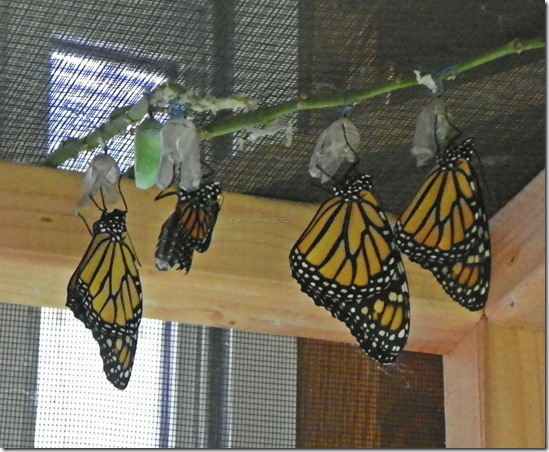
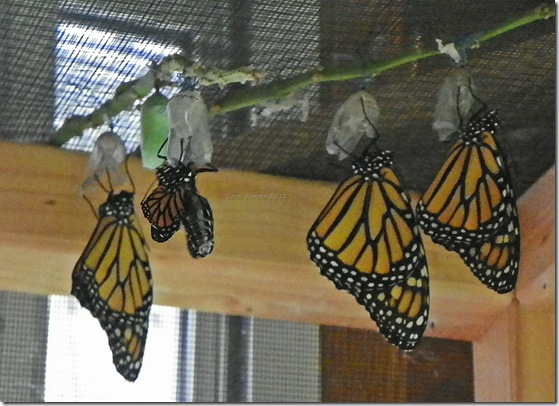
The fluid in the swollen abdomen is pumped into the wings. You can see they have increased in size a little.
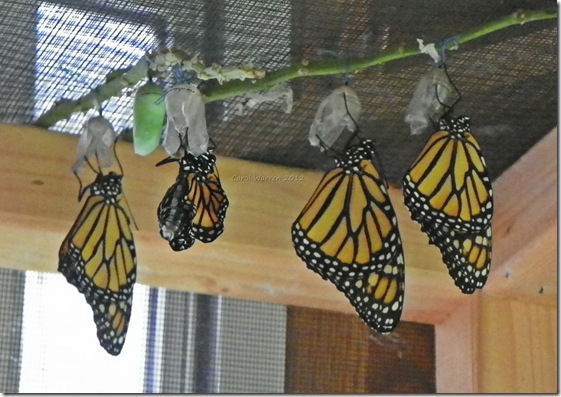
Getting bigger
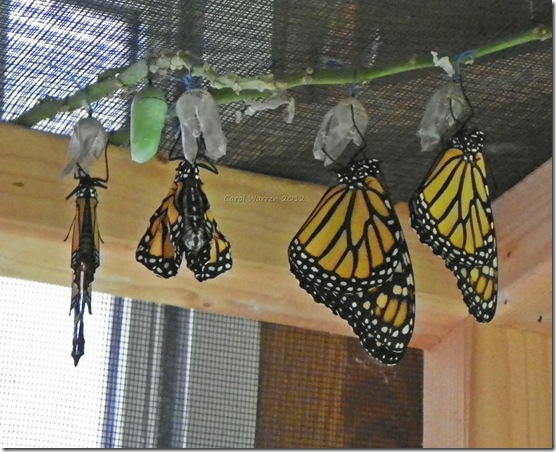
They will hang like this for 3 or 4 hours then start flexing their wings and learning to fly.
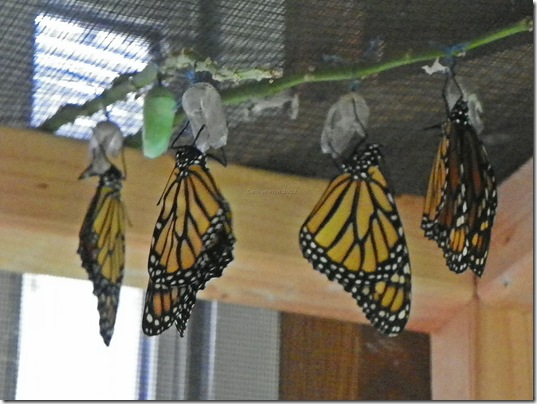
Here is another series. This is the same group, the second one is almost dry and one on the far R has just emerged.
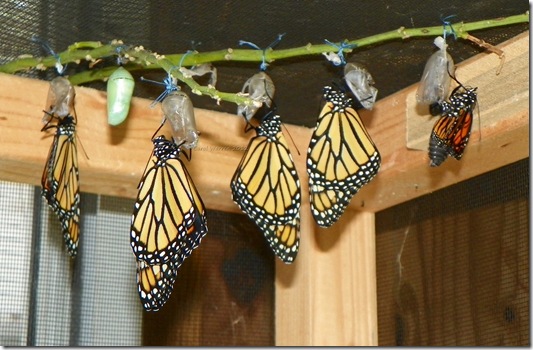
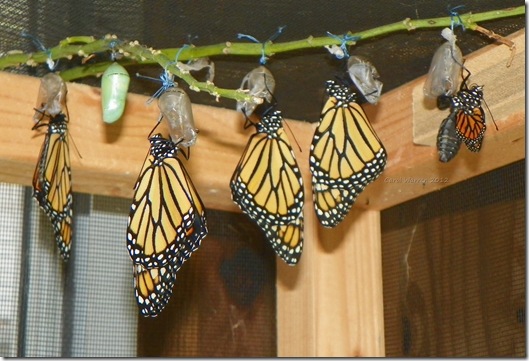
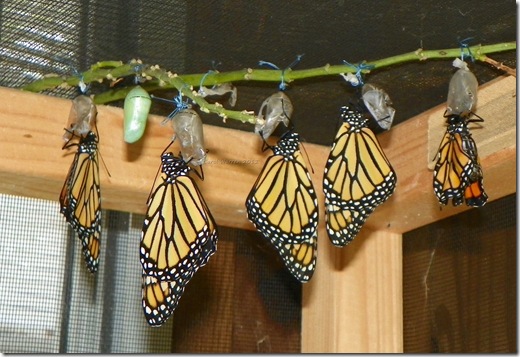
The green chrysalis wont be ready for another day or two.
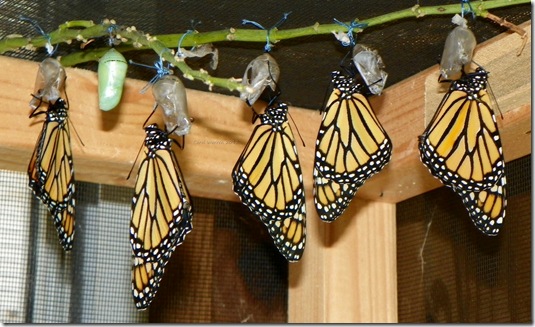
The chrysalis on the L will be ready tomorrow….in the one on the R you can see the color and outline of the wings…that emerged a few minutes after this was taken.
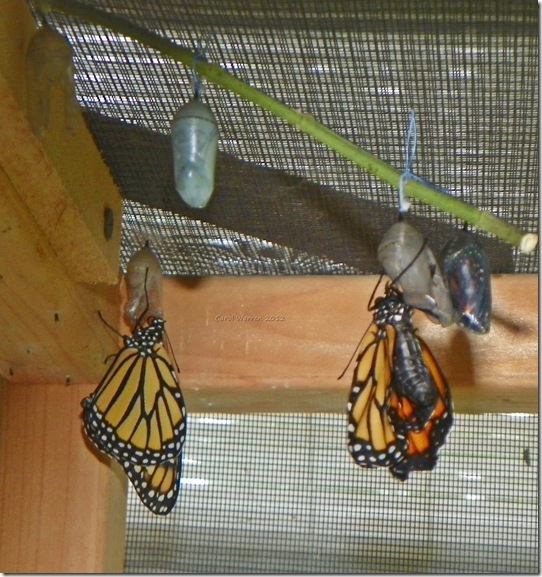
Since the weather is so hot it has only been taking the caterpillars about 9 days before they pupate and go into the chrysalis stage, and then another 9 days before they emerge. All 31 were released. Most here but some in Debbie’s beautiful butterfly garden.
I now have another 28 in the cage, some ready to go to the top and pupate. I have a plant outside the cage with 20 or more hatchlings. As soon as the big caterpillars go up I will put them inside.
I love watching them emerge and then releasing them….but I enjoy watching the caterpillars go from something almost too small to see to big fat caterpillars.
This is the difference a week makes. This plant has the hatchlings on it. Can you see them? Even sitting a few feet from them they are hard to find.
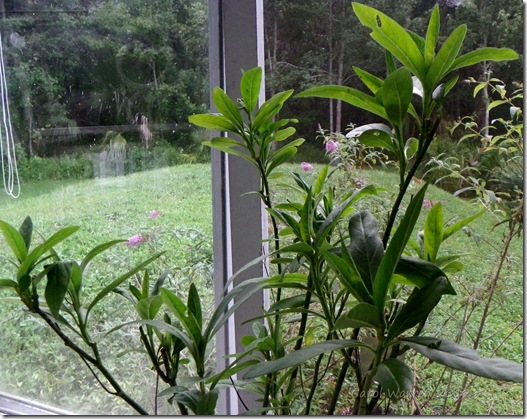
Here’s a close up of the leaves in the upper R corner of the photo above. This one is about 2 days old.
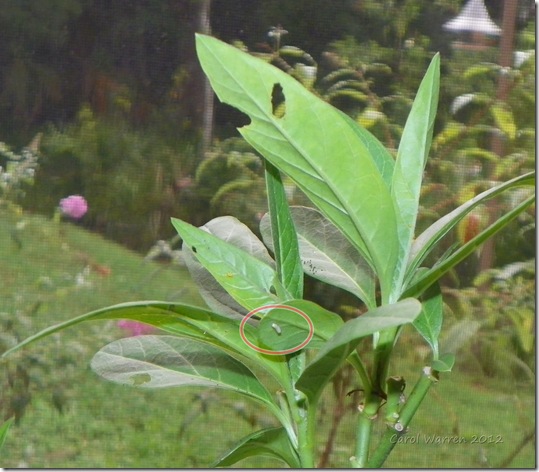
These are about a week older. There are about 16 in this picture…maybe one or two more. When I took this 3 had already started their journey to the top.
